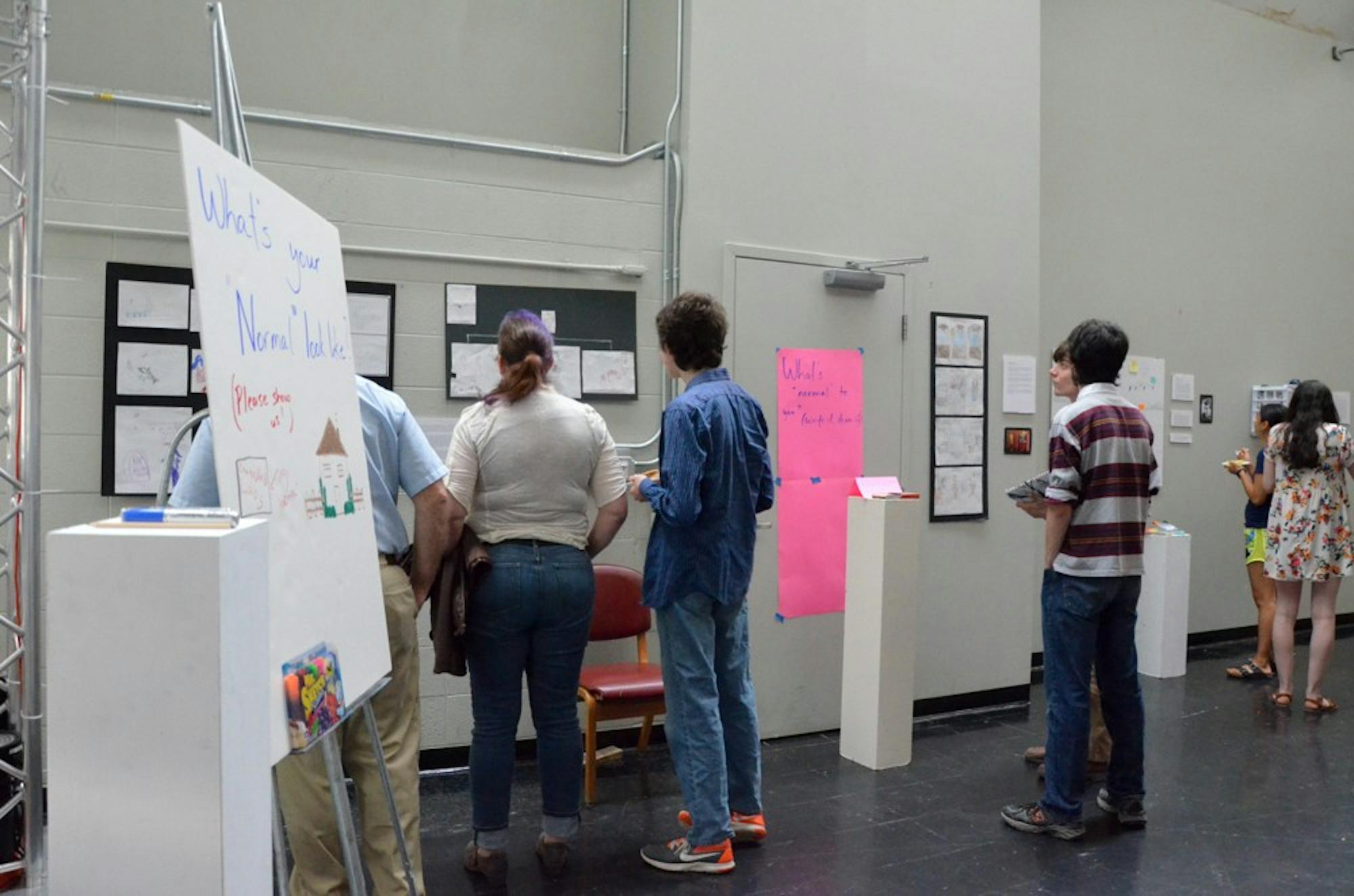Twelve young artists took over the Hopkins Center’s Garage studio space on Monday night for the opening of their gallery show created in collaboration with students enrolled in “Autism: Science, Story, and Experience.” The exhibit is part of a project designed by course instructors Sara Chaney, a writing professor for the Institute of Writing and Rhetoric, and psychology professor Bill Hudenko.
After teaching the science behind Autism Spectrum Disorder, a group of developmental disorders that affect an individual’s ability to interact in social situations or communicate effectively, and the rhetoric behind ASD, Chaney and Hudenko paired the students with local autistic children for a collaborative, creative project that would serve as a culminating experience for the course.
Chaney said she and Hudenko wanted students to interact with people on the autism spectrum so they could develop a complete understanding of ASD that included an experiential element,
This year, the project was entitled, “What Is Normal?: Artists on the Autism Spectrum Reflect On Neurotypicality.”
Chaney defined the concept of neurotypical as what types of cognitive, social and communicative behavior people consider socially normal.
“Very often, people on the autism spectrum find themselves to be the object of other people’s attention rather than being able to reflect their own perspective on the so-called neurotypical culture,” she explained.
The professors and the students encouraged the artists to create and express themselves freely in whichever medium they found fitting. Some were inspired by the theme, while others chose to go in different directions.
“The theme, while interesting, might not be something that all of the participants [related] to,” Chaney said. “We were very aware that they may or may not really think about themselves in terms of normal or abnormal, and we didn’t want to force that perspective, either.”
Hudenko said the intention was to facilitate personal expression, not to constrict the artists into having a certain kind of expression.
“It helps people to feel really validated in their thoughts and their ideas,” he said.
At Monday’s reception, the artists and the students shared a range of media such as paintings, drawings, films and sculptures for viewers, which included the artists’ families and local educators.
Chaney said the breadth of medium reflected the importance of providing an array of options to communicate and express oneself for individuals with communication styles that differ from what is considered to be the norm.
Psychology major Lauren Schulte ’16 said she had a great experience working with her collaborator, a child from the Hartford Autism Regional Program in White River Junction.
“I’m interested in working with kids and possibly going into school psychology, so this was perfect,” she said.
Schulte chose to step back and let the artist express herself, acting as a facilitator in the child’s creative process.
Chaney encouraged many of the students to take this sort of approach to let the individuals’ creative visions unfold.
“One of the things we wanted to do with this project is create a forum in which the students are basically assisting people on the autism spectrum to represent themselves,” Chaney said.
After picking a topic that the child enjoyed, Schulte said she could tell the girl was really happy and excited when the project was complete.
The participating artists ranged from 11 to 20 years old and came from throughout New Hampshire and Vermont.
Sarah Ogren ’16, an economics major and public policy minor, also worked with a child from HARP. She saw him enjoy artistic creation and find a sense of confidence in his work.
“He had a chance to express himself and to know that his art was going to be put in a gallery at Dartmouth,” Ogren said.
Hudenko said the highly interdisciplinary nature of the course and this collaboration allowed students in the course to experience strong epiphanies and engage with the topic in a meaningful way.
The story aspect of the course focused on how people’s ideas about autism shape the way they interact with autistic people in real life, Chaney said.
“We really wanted [the students] to think about what [it means] to live [a] life framed by these diagnostic categories and these social realities,” she added.
Hudenko echoed these sentiments by noting ASD people may be stigmatized and marginalized. By helping others recognize this problem, social change can occur, he said.
The exhibition remained open to the public until Wednesday.
“Autism: Science, Story, and Experience” will be offered again next year and is open to students of all class years.




